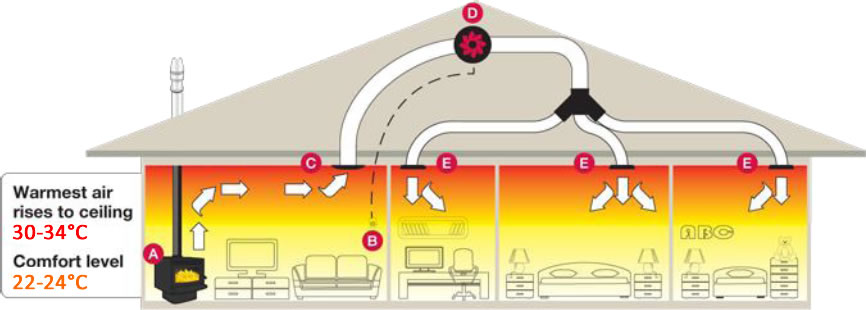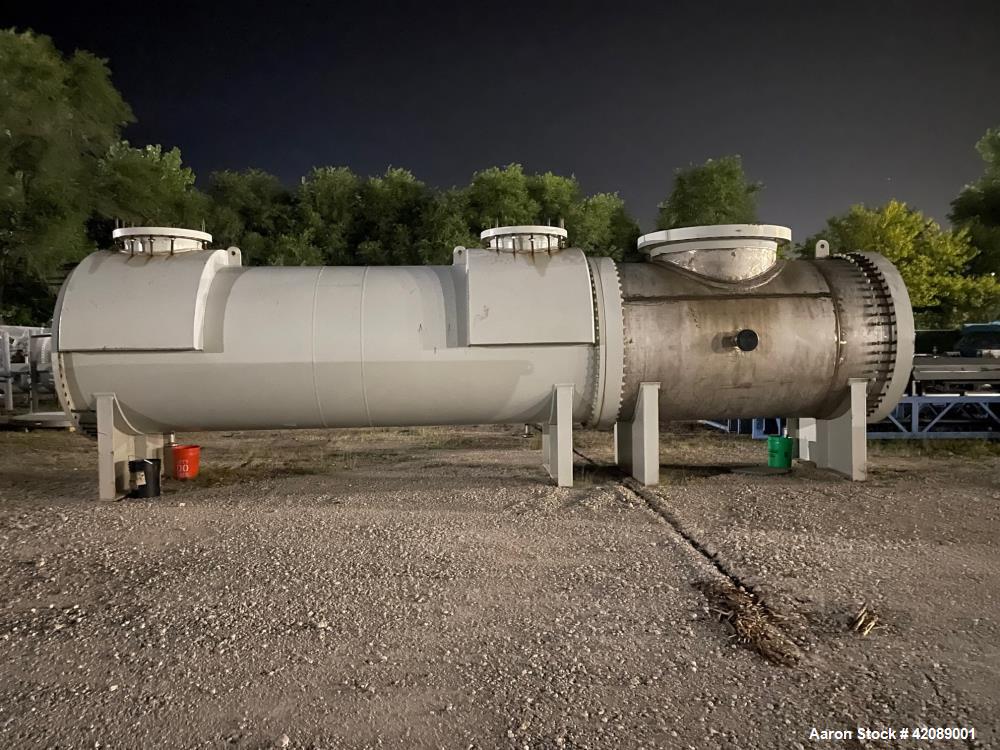Innovations in Heat Transfer Systems: What You Required to Know for Optimum Efficiency
Innovations in Heat transfer systems are transforming efficiency throughout different markets. Advanced products like graphene and nanofluids guarantee significant improvements in thermal conductivity. The assimilation of IoT and machine knowing uses chances for real-time surveillance and enhanced power efficiency. Nonetheless, the landscape of thermal management is rapidly developing (DVS Heat Transfer Systems). Understanding these advancements is crucial for attaining suitable system efficiency and sustainability in the future. What specific developments are forming this transformation?
Emerging Products for Enhanced Heat Transfer

Advanced Heat Exchanger Styles
While traditional Heat exchangers have served their purpose in numerous applications, advanced styles are now arising to meet the enhancing needs for effectiveness and performance. These innovative layouts, such as plate, shell-and-tube, and finned-tube Heat exchangers, incorporate boosted surface locations and improved circulation patterns to raise thermal transfer prices. Additionally, compact styles enable decreased area needs without compromising performance. Advanced products, such as composites and corrosion-resistant alloys, furthermore boost longevity and performance under extreme conditions. Simulation innovations and computational liquid dynamics are increasingly utilized to improve these layouts, making sure peak Heat transfer attributes. As sectors look for to minimize power intake and maximize result, the adoption of innovative Heat exchanger layouts is essential in accomplishing these purposes.
The Function of Nanotechnology in Heat Transfer
Nanotechnology plays a vital role in boosting thermal conductivity within Heat transfer systems. By adjusting products at the nanoscale, scientists have achieved considerable enhancements in power effectiveness. These innovations not just optimize performance however also add to more lasting energy solutions.
Enhanced Thermal Conductivity
Significant developments in thermal conductivity have actually arised with the application of nanotechnology, changing Heat transfer systems across various sectors. By incorporating nanoparticles right into Heat transfer liquids and products, scientists have achieved amazing rises in thermal conductivity. These nanoparticles, such as carbon nanotubes, graphene, and metal oxides, enhance the Heat transfer buildings due to their high surface and one-of-a-kind thermal features. The resulting composites show boosted performance in applications ranging from electronic devices cooling systems to renewable resource innovations. In addition, the capacity to customize the dimension, form, and make-up of nanoparticles permits enhanced thermal management remedies. Therefore, nanotechnology remains to play a critical duty in the development of much more reliable and reliable Heat transfer systems, leading the way for boosted commercial applications.
Power Performance Improvements

Assimilation of IoT in Heat Transfer Equipments
The assimilation of IoT in Heat transfer systems presents the execution of clever sensing units that enhance functional effectiveness. These sensors enable real-time data tracking, allowing for prompt modifications and optimizations. This technological development has the possible to significantly boost efficiency and energy management in Heat transfer applications.
Smart Sensors Application
As Heat transfer systems advance, the integration of smart sensing units with the Net of Things (IoT) has actually become a transformative technique. These sensors allow real-time surveillance of temperature level, flow, and stress prices, enhancing system effectiveness and reliability. By collecting and transferring information, they facilitate positive maintenance, minimizing the threat of system failings. In addition, wise sensing units add to energy cost savings by refining functional specifications based upon environmental conditions. Their ability to examine fads and anomalies allows for informed decision-making, making sure peak performance of Heat transfer systems. As markets significantly adopt this modern technology, the implementation of wise sensors stands to change how Heat transfer systems are handled, leading the way for better sustainability and boosted efficiency outcomes.
Real-Time Information Monitoring
Just how can real-time information monitoring enhance the efficiency of Heat transfer systems? By incorporating Internet of Things (IoT) innovation, Heat transfer systems can utilize continual information collection from smart sensors. This real-time tracking enables for instant evaluation of temperature level, circulation, and stress rates, enabling operators to recognize inefficiencies without delay. Adjustments can be made to maximize efficiency, lower power intake, and extend equipment life-span. Furthermore, anticipating maintenance can be executed, decreasing unexpected downtime and costly fixings. The capability to envision performance metrics through dashboards improves decision-making, cultivating a proactive approach to system management. Ultimately, real-time data keeping an eye on not just improves see this here functional effectiveness yet likewise adds to sustainability objectives within industrial processes.
Power Performance and Sustainability Trends
Energy efficiency and sustainability fads are improving the landscape of Heat transfer systems, driving technology and conformity throughout numerous industries. Organizations are significantly focusing on energy-efficient layouts to lower functional prices and reduce environmental effects. The integration of renewable power sources is becoming much more prevalent, allowing Heat transfer systems to operate sustainably while fulfilling governing needs. In addition, improvements in products and technologies promote reduced energy intake and boost general efficiency. Lifecycle analyses are additionally gaining grip, enabling companies to review the ecological influence of Heat transfer systems from production to disposal. This concentrate on sustainability not only sustains business responsibility however additionally positions companies competitively in a market where consumers increasingly prefer environment-friendly solutions. Consequently, energy effectiveness and sustainability continue to be vital factors to consider for future advancements in Heat transfer technology.
Advancements in Thermal Administration Solutions
While the demand for effective Heat transfer remains to climb, innovations in thermal administration services are emerging to address both performance and sustainability challenges. Advanced materials, such as phase adjustment materials and nanofluids, are being developed to boost Heat transfer effectiveness - DVS Heat Transfer Systems. These materials boost thermal conductivity and permit far better temperature level guideline in numerous applications. Furthermore, innovations like energetic thermal control systems are acquiring grip, making it possible for real-time adjustments to handle Heat flow effectively. These systems add to power cost savings and minimize the ecological impact of thermal procedures. Furthermore, the integration of IoT in thermal monitoring helps with monitoring and predictive maintenance, making sure optimized efficiency and longevity of Heat transfer systems. Overall, these technologies stand for substantial strides towards more lasting thermal administration methods
Future Directions in Heat Transfer Technology
Arising improvements in thermal administration solutions signal an appealing future for Heat transfer modern technology. Researchers are increasingly concentrating on creating materials with exceptional thermal conductivity and boosted power efficiency. Advancements such as nanofluids, which consist of put on hold nanoparticles, use considerable renovations in Heat transfer efficiency. In addition, the assimilation of clever materials that adjust to varying temperature conditions is obtaining grip, permitting even more effective and receptive systems. The increase of additive production methods is also making it possible for the style of complicated Heat exchanger geometries that enhance liquid flow. Moreover, the execution of artificial intelligence algorithms is expected to revolutionize the optimization of Heat transfer systems, facilitating predictive maintenance and performance enhancement. Collectively, these improvements are poised to transform the landscape of Heat transfer modern technologies in different industries.

Often Asked Inquiries

Just how Do I Select the Right Heat Transfer System for My Application?
Selecting the best Heat transfer system involves examining application requirements, consisting of temperature level ranges, fluid properties, and effectiveness needs. Examining system types, maintenance factors to consider, and cost-effectiveness also plays a crucial role in making an informed choice.
What Are the Upkeep Demands for Advanced Heat Exchangers?
Upkeep needs for advanced Heat exchangers generally include normal inspections, checking for leakages, cleansing of surface areas, and assuring ideal flow prices. Sticking to manufacturer standards assurances efficient operation and prolongs the equipment's life-span.
Just How Do Environmental Factors Affect Heat Transfer Performance?
Environmental elements substantially affect Heat transfer performance. Variants in moisture, temperature, and airflow impact thermal conductivity and convective Heat transfer, ultimately affecting system efficiency and requiring factor to consider throughout the layout and procedure of Heat transfer systems.
What Security Standards Relate To Heat Transfer Solutions?
Safety and security linked here standards for Heat transfer systems typically include standards from companies such as ASME and ASTM. DVS Heat Transfer Systems. These standards address products, design, and operational techniques to assure dependability, efficiency, and security versus hazards in numerous applications
Exactly How Can I Fix Usual Heat Transfer System Issues?
Fixing typical Heat transfer system problems involves examining for leaks, guaranteeing appropriate liquid flow, checking insulation stability, and verifying temperature level differentials. Recognizing these elements can aid maintain system effectiveness and stop additional problems.
Nanotechnology plays a necessary duty in enhancing thermal conductivity within Heat transfer systems. Significant developments in thermal conductivity have emerged through the application review of nanotechnology, revolutionizing Heat transfer systems throughout different industries. Advancements in thermal conductivity through nanotechnology have led the method for exceptional renovations in power efficiency within Heat transfer systems. Power effectiveness and sustainability patterns are improving the landscape of Heat transfer systems, driving advancement and compliance across numerous sectors. The assimilation of IoT in thermal management promotes monitoring and predictive upkeep, making sure enhanced efficiency and long life of Heat transfer systems.